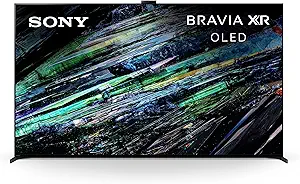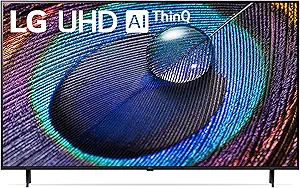Sony and LG are two of the leading brands in the television market, both renowned for their innovative technologies and high-quality products. Sony televisions, particularly those in the Bravia series, are known for their advanced technology such as the X-Reality PRO picture processing engine, which enhances every pixel for exceptional clarity, and the Triluminos Display, which reproduces a wider, more precise range of colors. On the other hand, LG televisions are recognized for their OLED technology, which delivers perfect black and intense color, and the α9 Gen 3 AI Processor 4K, which uses machine learning algorithms to render rich detail and color. However, both brands have their own set of pros and cons. Sony televisions are lauded for their excellent picture quality and sound, but they tend to be more expensive than other brands. Some users also find their smart TV interface not as user-friendly as others. Conversely, LG televisions are praised for their vibrant colors and deep blacks, thanks to their OLED technology, and their user-friendly smart TV interface. However, their TVs are not as bright as other brands, which can be a disadvantage in well-lit rooms. Compared to other brands, Sony and LG televisions stand out for their advanced technologies and high-quality displays, but they also have their own strengths and weaknesses that consumers should consider.
Picture Quality
Top-Rated Picture Quality Brands
Sony televisions are renowned for their exceptional picture quality, largely due to their use of cutting-edge technologies such as the X1 Ultimate Processor, Triluminos Display, and X-Reality Pro. The X1 Ultimate Processor enhances color, contrast, and clarity, providing a more realistic and detailed viewing experience. The Triluminos Display produces a wider color spectrum, offering more vibrant and lifelike colors. The X-Reality Pro, on the other hand, upscales and refines the images, making them sharper and clearer. However, Sony televisions are often more expensive compared to other brands, which might be a downside for some consumers. On the other hand, LG televisions also offer excellent picture quality, with their use of technologies like OLED, NanoCell, and Alpha 9 Gen 3 AI Processor. OLED technology enables perfect black levels and infinite contrast, resulting in more depth and detail in the picture. NanoCell technology delivers a wider color gamut and improved color accuracy. The Alpha 9 Gen 3 AI Processor enhances picture and sound quality by using deep learning algorithms. LG televisions are generally more affordable compared to Sony, making them a popular choice among consumers. However, some users have reported issues with screen burn-in on LG's OLED models, which could potentially affect the picture quality over time.
Design
Sony and LG are two of the leading brands in the television industry, both known for their innovative designs. Sony televisions are typically characterized by their sleek, minimalist design, often featuring slim bezels and a clean, uncluttered look. The latest models, such as the Sony Bravia XR A90J, come with a two-position stand, allowing users to adjust the TV's height to accommodate a soundbar. The design also includes a cable management system to keep wires hidden, adding to the overall aesthetic appeal. On the other hand, LG televisions are known for their futuristic designs. The LG Signature OLED R, for instance, boasts a rollable screen that can completely disappear into its base when not in use, a feature that is unique to LG. Moreover, LG's Gallery Design models are ultra-thin and designed to sit flush against the wall, creating the illusion of a piece of art. However, some users have noted that the stands on certain LG models are not as sturdy as they would like. In comparison to other brands, both Sony and LG offer innovative and stylish designs, but LG seems to push the envelope a little further with more futuristic features.
Sound
Top-Rated Sound Quality Brands
Sony televisions are known for their superior sound quality, primarily due to the integration of their proprietary Acoustic Surface Audio technology. This technology allows the sound to emanate directly from the screen, creating a more immersive audio experience. Sony's sound system also includes Dolby Atmos, which provides a three-dimensional sound that flows around you. However, some users have reported that the bass could be improved, and the sound may distort at higher volumes. On the other hand, LG televisions come equipped with AI Sound Pro and Dolby Atmos. The AI Sound Pro technology automatically analyzes and adjusts the audio for optimal sound quality based on the content genre. LG's sound system also includes a built-in 2.2 channel speaker system, which provides a rich and clear sound. However, while the sound is generally good, it may lack the depth and immersion provided by Sony's Acoustic Surface Audio technology. Some users also report that the sound can seem flat and lacks punch in the bass department. In comparison to other brands, both Sony and LG televisions offer superior sound quality, but they each have their unique strengths and weaknesses.
Quality & Performance
Sony and LG are both leading brands in the television market, each offering a range of models with varying levels of quality and performance. Sony televisions, particularly the Bravia series, are known for their exceptional picture quality, owing to their use of advanced technologies such as X-Reality PRO for picture processing and TRILUMINOS display for a wider color spectrum. However, some users have reported issues with the Android TV interface, stating it can be slow and not as user-friendly as some competitors. On the other hand, LG televisions, especially those in the OLED series, offer excellent performance with deep blacks and infinite contrast ratio, thanks to their use of OLED technology. LG's WebOS interface is also generally praised for its ease of use and smooth performance. However, while LG's OLED TVs offer superior picture quality, they are prone to burn-in, which can damage the screen over time if static images are displayed for prolonged periods. Additionally, LG's non-OLED models often don't perform as well as their Sony counterparts. Overall, both brands have their strengths and weaknesses, and the choice between them often comes down to personal preference and specific needs.
Smart TV & Connectivity
Sony and LG televisions both offer smart TV and connectivity features, but they differ in their implementation and performance. Sony televisions, specifically those running on Android TV, offer a wide range of apps and services, thanks to the Google Play Store. They also support Google Assistant, allowing users to control their TV and other connected devices using voice commands. Sony TVs also come with Chromecast built-in, enabling users to easily cast content from their mobile devices. However, some users have reported that Sony's interface can be a bit slow and cluttered. On the other hand, LG televisions run on WebOS, which is known for its simple and user-friendly interface. LG's smart TVs come with a unique feature called Magic Remote that works like a mouse pointer, making it easier to navigate the interface. LG TVs also support popular voice assistants like Google Assistant and Amazon Alexa. They also have a feature called LG ThinQ AI, which allows the TV to become the hub for all your smart home devices. However, LG's app store is not as extensive as Sony's, which may limit the number of apps you can install on your TV. Both brands support the latest connectivity technologies like HDMI 2.1, eARC, Wi-Fi, and Bluetooth, but Sony TVs generally have more HDMI ports than LG TVs.
Brand Reputation
Sony and LG are both highly reputable brands in the television industry, each with their own strengths and unique selling points. Sony, a Japanese multinational conglomerate, is known for its premium quality products and is often associated with advanced technology and excellent picture quality. Its televisions, particularly the Bravia series, are praised for their color accuracy, contrast, and motion handling. Sony's X1 Ultimate processor, used in their high-end models, is considered one of the best in the market. However, Sony televisions are generally more expensive than other brands, which could be a drawback for budget-conscious consumers. On the other hand, LG, a South Korean multinational electronics company, has a strong reputation for its innovative features and smart TV platform. LG's OLED TVs are highly acclaimed for their superior contrast and black levels. The company's proprietary AI-powered α9 Gen 3 processor delivers stunning visuals and sound. LG's webOS has a user-friendly interface and offers a wide selection of apps. However, some users have reported issues with the longevity of LG TVs. Comparatively, both Sony and LG have a strong brand reputation in the TV market, with Sony often being associated with premium, high-quality products, and LG known for its innovation and user-friendly smart TVs.
Brightness
Sony televisions, specifically their latest models like the Bravia X90J, are known for their excellent brightness levels, which significantly enhance the quality of the image displayed. Sony uses its proprietary X-tended Dynamic Range technology, which boosts the brightness in the areas where it's needed the most, creating a more realistic and vibrant picture. However, in some cases, Sony TVs can struggle with maintaining consistent brightness levels across the screen, especially in darker scenes, which can lead to minor issues with the picture quality. On the other hand, LG televisions, particularly their OLED models like the LG C1, offer superior brightness control due to their per-pixel illumination technology. Each pixel can be independently controlled, allowing for perfect blacks and excellent contrast ratios. However, while LG's OLED TVs offer exceptional picture quality, they don't reach the same peak brightness levels as Sony's top LED models. This can make LG TVs less suitable for very bright rooms, as the picture might not be as clear when viewed in direct sunlight. However, LG's latest QNED Mini LED TVs, which use thousands of tiny LEDs, promise to deliver improved brightness levels, potentially closing the gap with Sony's offerings.
Smart Features
Sony and LG televisions are both renowned for their smart features, which include a range of applications, streaming services, and voice control capabilities. Sony televisions, powered by Android TV, offer a wide array of apps from Google Play, including Netflix, Amazon Video, Hulu, and YouTube. They also support Google Assistant for voice control and can integrate with other smart devices in your home. However, they have been criticized for their complex user interface and occasional software glitches. On the other hand, LG televisions use their proprietary webOS platform for their smart features. WebOS is praised for its simple, intuitive user interface and smooth operation. It offers a similar range of apps to Sony, including popular streaming services and LG's own channels. LG televisions also support voice control, but through both Google Assistant and Amazon Alexa, offering a bit more flexibility than Sony. However, LG's smart features may not integrate as seamlessly with non-LG devices. Compared to other brands, both Sony and LG offer robust smart features, but the choice between the two may come down to personal preference for Android TV versus webOS.
Remote Control
Sony and LG are two of the leading brands in the television market, both offering high-quality products with advanced technologies. One aspect that differentiates these two brands is their remote control designs and functionalities. Sony's remote controls, especially for their Bravia series, are known for their simplistic design and ease of use. They feature a dedicated Netflix button and Google Assistant button, allowing for voice control functionality. The remote also includes an integrated microphone, which enhances the voice control functionality. However, some users have criticized Sony's remote controls for their lack of backlighting, making it difficult to use in low-light conditions. On the other hand, LG's Magic Remote is highly praised for its innovative design and smart features. The Magic Remote uses motion-control technology, allowing users to operate the TV by simply pointing the remote and clicking. It also features voice recognition, with built-in AI that supports Google Assistant and Amazon Alexa. This allows for easy access to streaming services and smart home control. The scroll wheel in the center of the remote makes navigating menus and adjusting volume levels a breeze. However, the Magic Remote's unique design may take some time for users to get used to, and it is also slightly larger than most standard remotes. In comparison to other brands, both Sony and LG offer advanced remote control features, but LG seems to take the lead with its innovative Magic Remote design.
Related Video
Conclusion
Sony and LG are two of the most recognized brands in the television industry, known for their innovative technologies and high-quality displays. Sony televisions, for instance, are renowned for their excellent picture quality, powered by their proprietary X1 Ultimate processor. This technology enhances the color, contrast, and clarity of the images, providing a more immersive viewing experience. However, Sony TVs are generally more expensive than other brands, which may not be ideal for budget-conscious consumers. On the other hand, LG televisions are known for their OLED technology, which offers deeper black levels and superior contrast compared to traditional LED TVs. LG's WebOS platform also provides a user-friendly interface and a wide range of apps, making it a great choice for smart TV users. However, LG TVs may not be as bright as other brands, which could be a disadvantage in well-lit rooms. In comparison to Sony, LG provides a competitive alternative with its unique features and more affordable pricing, making it a popular choice among consumers.




















